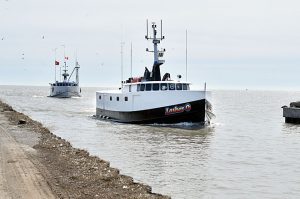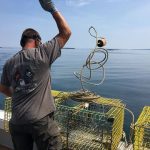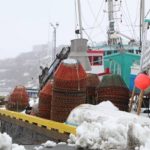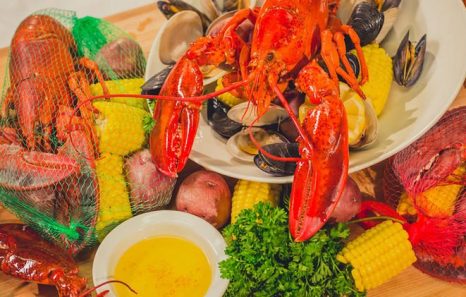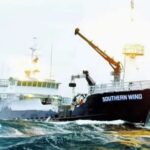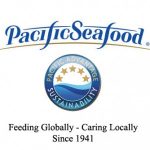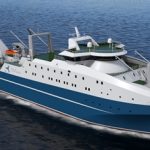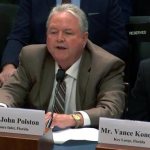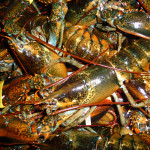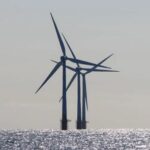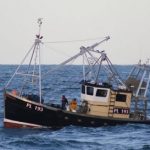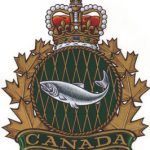Tag Archives: NOAA/NMFS
IS THE G.A.O. SLOWWALKING ITS INVESTIGATION OF OFFSHORE WIND IMPACTS? By Jim Lovgren
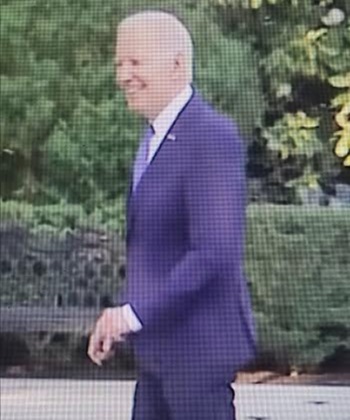 On June 15, 2023, Congressman Chris Smith issued a press release touting the acceptance by the General Accountability Office [GAO], of a request by the House Natural Resources Committee to investigate a wide range of issues related to the development of offshore wind. The Committee letter, signed by Chairman Bruce Westerman, was submitted on May 15 th , 2023, almost a year ago. I bring this up because the average time-length of most GAO investigations is three months. Which begs the question; Is the Biden administration “slow-walking” the GAO investigation? Slow-walking is the act of purposefully delaying action by stalling, stonewalling, making excuses of how hard it is to do, and other whiney efforts at delaying an investigation until it fails because it is too late. It is the bureaucrat’s favorite weapon of choice when forced to disclose vital information, that their politician benefactors don’t want exposed. more, >>click to read<< 06:10
On June 15, 2023, Congressman Chris Smith issued a press release touting the acceptance by the General Accountability Office [GAO], of a request by the House Natural Resources Committee to investigate a wide range of issues related to the development of offshore wind. The Committee letter, signed by Chairman Bruce Westerman, was submitted on May 15 th , 2023, almost a year ago. I bring this up because the average time-length of most GAO investigations is three months. Which begs the question; Is the Biden administration “slow-walking” the GAO investigation? Slow-walking is the act of purposefully delaying action by stalling, stonewalling, making excuses of how hard it is to do, and other whiney efforts at delaying an investigation until it fails because it is too late. It is the bureaucrat’s favorite weapon of choice when forced to disclose vital information, that their politician benefactors don’t want exposed. more, >>click to read<< 06:10
NOAA/NMFS Ignores Dangerous Sound Levels from Pile Driving – By Jim Lovgren
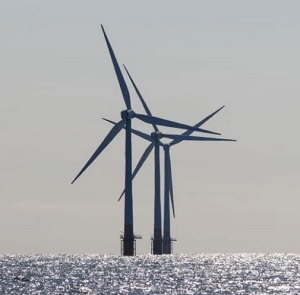 A new recently released report from Rand Acoustics, LLC scientifically documented that the stated sound levels created by the pile driving of wind turbine stanchions into the seafloor is much louder than the NOAA approved levels. In a study dated November 2, 2023, the researchers used acoustic listening devises to record the underwater sounds being created from piledriving by the crane ship “Orion” in the Vineyard wind BOEM lease area OCS-A 0501 southwest of Nantucket Island. Prior to this research, Rand Acoustics documented the underwater sound levels being produced by some of the research vessels using sonar and seismic devises to examine and document the seafloor prior to turbine construction. This research proved that the sound levels produced by these research vessels exceeded the stated sound levels approved by NOAA/NMFS to protect marine mammals and resulted in the documentary film “Thrown to the wind”. more, >>click to read<< 11:28
A new recently released report from Rand Acoustics, LLC scientifically documented that the stated sound levels created by the pile driving of wind turbine stanchions into the seafloor is much louder than the NOAA approved levels. In a study dated November 2, 2023, the researchers used acoustic listening devises to record the underwater sounds being created from piledriving by the crane ship “Orion” in the Vineyard wind BOEM lease area OCS-A 0501 southwest of Nantucket Island. Prior to this research, Rand Acoustics documented the underwater sound levels being produced by some of the research vessels using sonar and seismic devises to examine and document the seafloor prior to turbine construction. This research proved that the sound levels produced by these research vessels exceeded the stated sound levels approved by NOAA/NMFS to protect marine mammals and resulted in the documentary film “Thrown to the wind”. more, >>click to read<< 11:28

Where have all the dead whales gone? By Nils Stolpe, FishNet-USA
Beginning in December of last year and extending through most of the first quarter of 2023, New Jersey and New York beaches were inundated with abnormally high numbers of dead or dying whales and smaller marine mammals. These majestic creatures-though not so majestic when being pushed about willy-nilly by tides, wind, waves and various types of earth moving machines-have never expired in such large numbers in such publicly accessible locations in local residents’ memories. Perhaps coincidently, intensive hydroacoustic surveys to determine the suitability of potential sites for the construction of thousands of gigantic windmills and their supporting infrastructure (supposedly to help us all survive what is being sold as an imminent energy/climate crisis) were being committed offshore of the beaches where all of these marine mammal deaths and strandings have been concentrated. To us inveterate observers of that hunk of Atlantic Ocean real estate known as the New York Bight, and the critters that temporarily or permanently live there, and of the actions of the public agencies charged with-and entitled to tens of millions of taxpayer dollars each year to do so-administering the Endangered Species and the Marine Mammal Protection Acts, that surely hints at, at best, ineptitude at that’s ineptitude at a fairly advanced level. >click to read the article< 16:14
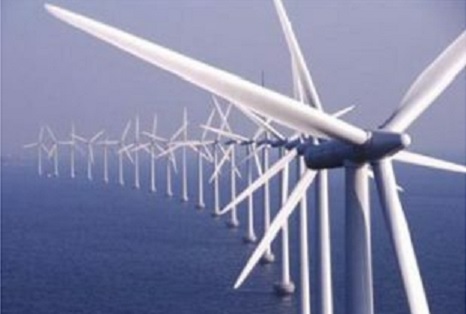
Nils Stolpe: How many statisticians does it take to….
Screw in a lightbulb? Trivialize the deaths of at least two dozen whales? Convince the world that the massive installation of wind power off our East Coast won’t irreparably damage our estuarine, inshore and offshore ecosystems? The folks at NOAA/NMFS (and with the convenient parroting of myriad so-called environmentalists, and BOEM, the other part of the federal cheerleading squad selling Ocean Wind as a major solution to our “energy crisis”) have declared that it hasn’t been proven that there aren’t any relationships between the extensive survey work being committed by Big Wind and the associated contractors and the two dozen deaths that have been visited upon several species of whales off New York and New Jersey. What is their proof? Inadequately enough, their “proof” boils down to the fact that they have seen no proof. To my way of thinking, that’s tantamount to convicting someone of murder because there is no proof that he or she isn’t a murderer. But it appears as if, as far as dead whales and President Biden’s and New Jersey’s Governor Murphy’s windmill fantasies are concerned, that’s good enough. At least for NOAA/NMFS, BOEM and a bunch of environmental organizations. Why? >click to read< 09:54

Entanglement blame game good for wallets, not for whales
In response to the dissemination of “misleading and false information” about the Maine lobster fishery and their interaction with right whales, not even the federal government (NOAA/NMFS) attributes a right whale death to the Maine fishery. In fact, only two whales have ever been seen in Maine lobster gear and the last one was 18 years ago. A red marker found on gear in 2012 could have come from anywhere in New England. Maine lobstermen voluntarily changed their marker color to purple in 2020 to clearly differentiate themselves from the other New England states and to avoid any further allegations. Deaths and serious injuries in Maine lobster gear have remained constant at zero since right whale observations were initiated. To improve on that is impossible. >click to continue reading<, By Jack Merrill 15:35
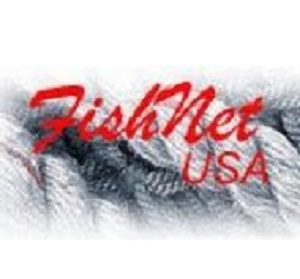
Wallop Breaux funding: the rest of the story!
Folks – I’ve been yammering on and on about the Wallop-Breaux program, an excise tax on boating and fishing gear and non-commercial marine use fuel sales. At the same time I’ve been focusing on a potential conflict of interest because 1/3 of the votes on the eight regional fishery management councils and 1/3 of the total votes on the three marine fisheries commissions (Atlantic, Gulf of Mexico and Pacific) are cast by each of the states’ senior marine fisheries administrator. Why a potential conflict? Because, as the attached table demonstrates, the various state fisheries programs receive a major part of their funding each year from Wallop-Breaux. >click to read< By Nils Stolpe, FishnetUSA 19:12

Fishing industry unimpressed with Biden Harris’s NOAA/NMFS climate crisis notions. (Offshore Wind Farms, either!)
President Biden ordered NOAA to collect information from a wide range of groups on increasing the resilience of fisheries as part of his plan to address climate change and to protect 30% of U.S. ocean areas by the year 2030. The NOAA directive is included in the sweeping executive order Biden signed his first week in office that made “the climate crisis” a centerpiece of his presidency. “Fisheries, protected resources, habitats and ecosystem are being affected by climate change,” acting NOAA Fisheries chief Paul Doremus said at the beginning of yesterday’s conference call. >click to read< 07:55
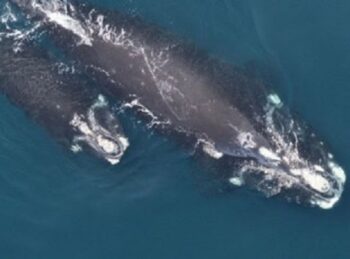
Evidence shows Maine lobster gear has not contributed to decline in Right whale population
In today’s world, it is hard to discern truth from opinion, or fact from calculated lies.,, The fact is also that no documented right whale death has ever been attributed to Maine lobstermen. There has only been one known entanglement in the past 20 years (2012). That whale was disentangled and set free.,,, The combination of ship strikes and snow crab gear entanglement was catastrophic, but had nothing to do with Maine lobster gear. The “guilt by association” assumption by environmental groups and NOAA/NMFS is unwarranted and unacceptable. By Jack Merrill. >click to read< 07:55
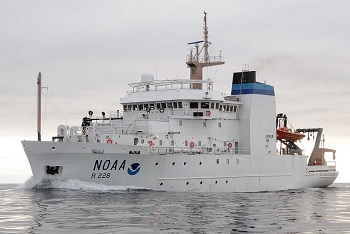
Covid-19 Transmission and Mandatory On-Board Observers
You have two Senators and one Member of Congress representing you in Washington. If you are concerned with the recent NOAA/NMFS decision to once again require their observers on board commercial fishing vessels,, you should let them know, and you should let them know ASAP, Feds the observers will be back and looking for rides on August 14, w/links,,, More on Covid-19: We know that research cruises by the R/V Bigelow have been cancelled for (at least) the rest of this year. There must be a compelling Covid-19 related reason for this, and I’d suspect for the fact that NOAA/NMFS has been making it awfully hard to get solid info on where their research vessels are or aren’t,, Captains and crew members know the people who work with them,, On the other hand, mandatory fisheries observers are about as far from necessary as one can get in this pandemic year. While they unknowingly will be putting fishermen at risk, in actuality all they will be doing will be providing government scientists with data points for them to add to data sets that in instances go back fifty years or more. By Nils Stolpe >click to read< 15:35
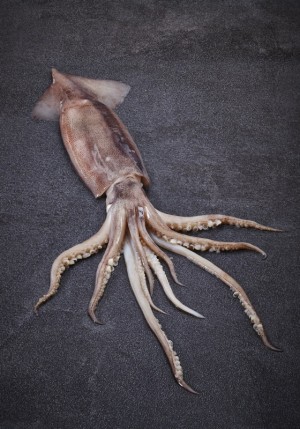
NOAA/NMFS Announces Increase to the Illex Squid Annual Quota Effective August 4, 2020
NOAA Fisheries announces an increase to the 2020 acceptable biological catch (ABC) for the Illex squid fishery from 26,000 mt to 30,000 mt. This quota increase was recommended by the Mid-Atlantic Fishery Management Council based on preliminary work by its Illex Squid Working Group, which concluded that the species continues to be lightly exploited and the fishery footprint is small. The Illex squid fishery has closed each summer in 2017, 2018, and 2019. This increase will enable full utilization of the available resource. This rule is effective on August 4, 2020. >click to read< 13:40

NOAA/NMFS Proposes Squid and Butterfish Quotas for the 2019 Fishing Year
Based on updated information, we are proposing an 8-percent increase in the 2019 commercial Illex squid quota. The previously approved 2019 annual quotas for longfin squid and butterfish would be maintained and would not be changed by this action. The increased 2019 Illex quota is based on an evaluation that similar historic catch has not harmed the stock. As new information becomes available, we may revise the proposed quotas for future fishing years. >click to read<11:19
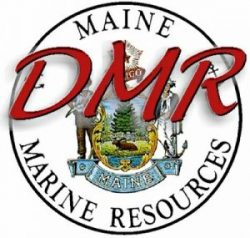
MAINE DMR schedules whale updates, community meetings
Maine’s $485-million lobster industry is facing serious restrictions on the way it operates as a consequence of efforts to protect endangered right whales from extinction. In April, DMR will hold a series of community meetings to talk with lobster industry members about upcoming actions by the NOAA Fisheries Atlantic Large Whale Take Reduction Team and the Atlantic States Marine Fisheries Commission dealing with protection issues. Meetings are scheduled for >click to read<14:28
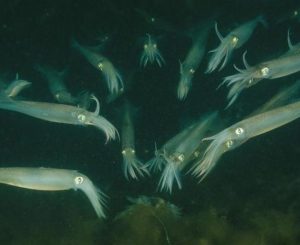
NOAA Fisheries Approves Changes to Longfin Squid Permits and Possession Limits
NOAA Fisheries has approved Amendment 20 to the Atlantic Mackerel, Squid, and Butterfish Fishery Management Plan. The measures become effective on March 1, 2019. Specifically, the final rule:
Separates the current longfin/butterfish moratorium permit to create a new butterfish moratorium permit and a separate longfin squid moratorium permit; Creates a “Tier 1” longfin squid moratorium permit for vessels that landed at least 10,000 lb of longfin squid in any year from 1997-2013; Creates a “Tier 2” longfin squid moratorium permit with a 5,000 lb possession limit fo,,, New longfin squid and butterfish permits will become effective on March 1, 2019 and will be issued by the Regional Administrator as follows:>click to read<13:36
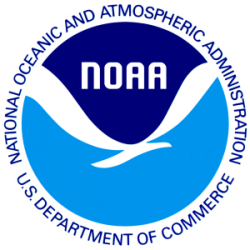
NOAA Fisheries Seeks Comments on Future Reporting Requirements for the American Lobster Fishery
The Atlantic States Marine Fisheries Commission recently approved Addendum XXVI to Amendment 3 of the Interstate Fisheries Management Plan for American Lobster to improve the scope and type of data collected in the lobster fishery in order to improve stock assessments, assess potential impacts of wind farms, and better assess interactions with marine mammals. The addendum includes recommendations to: Require all federal lobster permit holders to report on catches for each fishing trip. Have NOAA Fisheries collect data on where, when, and how long fishermen are fishing. Expand NOAA Fisheries’ offshore biological sampling program. >click to read<17:07

NOAA/NMFS seeks input on proposed sea lion removal at Willamette Falls
NOAA Fisheries is seeking public input on an application from the Oregon Department of Fish and Wildlife (ODFW) to remove, by lethal means if necessary, California sea lions preying on endangered and threatened salmon and steelhead at Willamette Falls on the Willamette River near Oregon City. The approach would be similar to the ongoing removal of sea lions preying on vulnerable populations of protected fish at Bonneville Dam on the Columbia River. Under the Marine Mammal Protection Act (MMPA), each application NOAA Fisheries receives for removing problematic sea lions must undergo independent consideration. info, click here to read the story 08:36
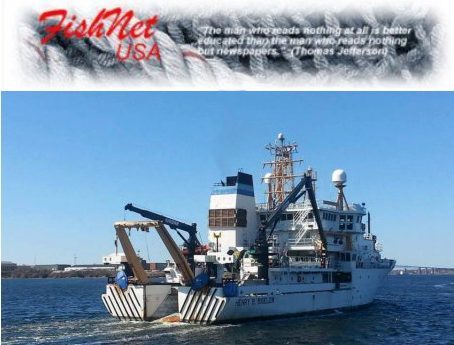
Trawl Surveys, what are they good for? – Nils E. Stolpe/FishNet USA
(Note that I am only addressing the NOAA/NMFS reliance on bottom trawl survey data in finfish stock assessments. I am not questioning the value of the wealth of biological and physical data that this long – running series of surveys generate.) From the article: According to NOAA/NMFS these surveys have provided and continue to provide “the primary scientific data” for fisheries assessments from North Carolina to Maine (fisheries assessments are the periodic – generally held every 3 to 5 years – scientific/bureaucratic exercises. In NOAA’s words “NOAA Fisheries’ scientific stock assessments are critical to modern fisheries management. Using data gathered from commercial and recreational fishermen and our own on-the-water scientific observations, a stock assessment describes the past and current status of a fish population or stock, answers questions about the size of the stock, and makes predictions about how a fishery will respond to current and future management measures.”) click here to read the article 12:35
NOAA/NMFS Declines to List Thorny Skate as Threatened or Endangered
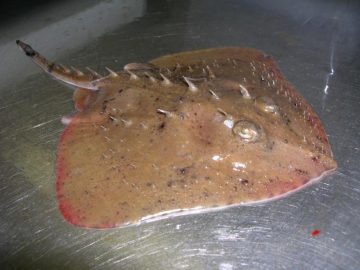 In response to a petition from Defenders of Wildlife and Animal Welfare Institute to list thorny skate (Amblyraja radiata) under the Endangered Species Act, we have now determined that listing is not warranted at this time. The May 2015 petition requested that we list a “Northwest Atlantic Distinct Population Segment” or a “United States Distinct Population Segment” of thorny skate as threatened or endangered. Thorny skate are at low abundance in U.S. waters compared to historical levels, primarily due to overfishing. However, declines have been halted throughout most of the species’ full range, and the species remains abundant throughout the North Atlantic, with hundreds of millions of individuals in the Northwest Atlantic alone. Read the rest here 12:21
In response to a petition from Defenders of Wildlife and Animal Welfare Institute to list thorny skate (Amblyraja radiata) under the Endangered Species Act, we have now determined that listing is not warranted at this time. The May 2015 petition requested that we list a “Northwest Atlantic Distinct Population Segment” or a “United States Distinct Population Segment” of thorny skate as threatened or endangered. Thorny skate are at low abundance in U.S. waters compared to historical levels, primarily due to overfishing. However, declines have been halted throughout most of the species’ full range, and the species remains abundant throughout the North Atlantic, with hundreds of millions of individuals in the Northwest Atlantic alone. Read the rest here 12:21
NOAA/NMFS Considers Moving Trawl Surveys to Fishing Vessels
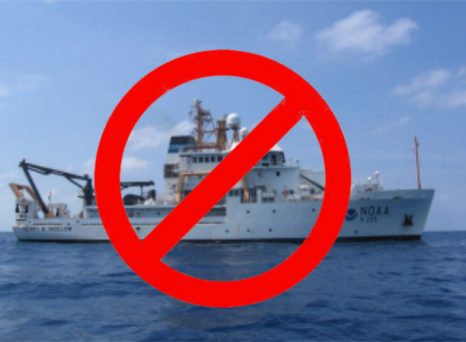 NOAA Fisheries is initiating a planning process to support its intention to transition part or all of the Northeast Fisheries Science Center’s spring and fall bottom trawl surveys from the NOAA Ship Henry B. Bigelow to fishing industry vessels provided that survey data collection quality and time series integrity can be maintained. “The bottom trawl survey is perhaps the most valuable ecological data set that we maintain at the Center,” said Bill Karp, the center’s director. “Those data are critical for many of the fishery stock assessments in the region and are mined by a wide variety of researchers for other purposes. By sharing the responsibility for gathering these data with the fishing industry, I think there will also come greater shared confidence in the results obtained using them.” Read the rest here 17:12
NOAA Fisheries is initiating a planning process to support its intention to transition part or all of the Northeast Fisheries Science Center’s spring and fall bottom trawl surveys from the NOAA Ship Henry B. Bigelow to fishing industry vessels provided that survey data collection quality and time series integrity can be maintained. “The bottom trawl survey is perhaps the most valuable ecological data set that we maintain at the Center,” said Bill Karp, the center’s director. “Those data are critical for many of the fishery stock assessments in the region and are mined by a wide variety of researchers for other purposes. By sharing the responsibility for gathering these data with the fishing industry, I think there will also come greater shared confidence in the results obtained using them.” Read the rest here 17:12
Catch Shares – Proven to be A Bad Idea
 The following is an opinion piece written by CSF board member Dick Grachek some time ago but time has not altered his view: The problem with catch shares is not in their “design”. The problem with catch shares is in their existence. Except for a few “winners” perhaps, it’s a problem for all concerned that this flawed and destructive privatization scheme was even considered, no less established as a management approach. Catch Shares have done nothing to help the fish. Catch Shares have done nothing to help the fishermen and the fishing communities. Catch Shares have done nothing to help the fish consuming public. Catch shares were not put to the referendum vote as statutorily mandated by the MSA. Catch Share Sectors were not “voluntarily” joined by the majority of the fishermen—the common pool was not a viable “option”. Read the rest here 15:21
The following is an opinion piece written by CSF board member Dick Grachek some time ago but time has not altered his view: The problem with catch shares is not in their “design”. The problem with catch shares is in their existence. Except for a few “winners” perhaps, it’s a problem for all concerned that this flawed and destructive privatization scheme was even considered, no less established as a management approach. Catch Shares have done nothing to help the fish. Catch Shares have done nothing to help the fishermen and the fishing communities. Catch Shares have done nothing to help the fish consuming public. Catch shares were not put to the referendum vote as statutorily mandated by the MSA. Catch Share Sectors were not “voluntarily” joined by the majority of the fishermen—the common pool was not a viable “option”. Read the rest here 15:21
Groundswell – New England Fisherman Steve Welch takes on Catch Shares, Council & Government Regulation
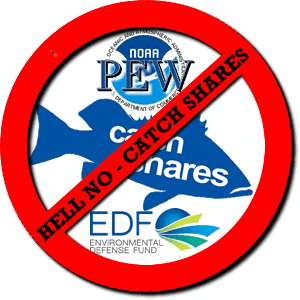 Commercial fisherman, Steve Welch of Plymouth, Mass. speaks against essential fish habitat proposals, and strongly opposes mentality of regional fish council that is ruining our industry. Groundswell notes that such anti-Catch Share feelings are common among many in Alaska,,, We need to bottle Steve Welch’s boldness and right feelings and get far more fishermen to go to council meetings and tell them and the Secretary of Commerce that enough is enough. It is time to end the hubris of RFMCs and their political appointees. Listen, and read the rest at groundswellalaska.com 14:36
Commercial fisherman, Steve Welch of Plymouth, Mass. speaks against essential fish habitat proposals, and strongly opposes mentality of regional fish council that is ruining our industry. Groundswell notes that such anti-Catch Share feelings are common among many in Alaska,,, We need to bottle Steve Welch’s boldness and right feelings and get far more fishermen to go to council meetings and tell them and the Secretary of Commerce that enough is enough. It is time to end the hubris of RFMCs and their political appointees. Listen, and read the rest at groundswellalaska.com 14:36
NOAA/NMFS: Closed Areas off southern New England to re-open for groundfishing for remainder of fishing year 2013
 As part of its efforts to mitigate some of the challenges facing New England groundfishermen this season, today, NOAA Fisheries announced that some areas that have been closed to fishing since 1994 will re-open. Two sections on the eastern and western side of the Nantucket Lightship Closed Area will open through April 30, 2014, the end of the current fishing year. Click here to read the NOAA Fisheries Bulletin. 12:54
As part of its efforts to mitigate some of the challenges facing New England groundfishermen this season, today, NOAA Fisheries announced that some areas that have been closed to fishing since 1994 will re-open. Two sections on the eastern and western side of the Nantucket Lightship Closed Area will open through April 30, 2014, the end of the current fishing year. Click here to read the NOAA Fisheries Bulletin. 12:54
Suppose there was an important fishery that was the basis of a large part of the coastal economy as well as the cultural cement that held coastal communities together. – Towards rationality in fisheries management
![]() Adding their interpretation to this, the people at NOAA/NMFS, with the enthusiastic support of the various and sundry anti-fishing activists who pull way too many of the strings in Washington, have added as an administrative guideline that “the most important limitation on the specification of OY (optimum yield) is that the choice of OY and the conservation and management measures proposed to achieve it must prevent overfishing.” More here
Adding their interpretation to this, the people at NOAA/NMFS, with the enthusiastic support of the various and sundry anti-fishing activists who pull way too many of the strings in Washington, have added as an administrative guideline that “the most important limitation on the specification of OY (optimum yield) is that the choice of OY and the conservation and management measures proposed to achieve it must prevent overfishing.” More here
North Pacific Fishery Management Council, NOAA/NMFS push controversial halibut catch sharing plan – public comments extended
 A revised version of the controversial halibut catch sharing plan is once again back up for federal review. “The fact that the CSP offers to rent back the fish that will have been stolen from the guided recreational angler strikes me as somewhat hypocritical,” Murphy said. continued@homernews
A revised version of the controversial halibut catch sharing plan is once again back up for federal review. “The fact that the CSP offers to rent back the fish that will have been stolen from the guided recreational angler strikes me as somewhat hypocritical,” Murphy said. continued@homernews
IRS will pay employees $70 million in bonuses – I wonder if NOAA/NMFS is still forking bonuses from the AFF?
Sen. Chuck Grassley of Iowa says his office has learned that the IRS is executing an agreement with the employees’ union on Wednesday to pay the bonuses. continued@oregonlive
Our View: Commerce Department’s release of report would help heal relationship with fishermen SouthCoastToday
Enforcement changes were implemented after Inspector General Todd Zinser’s report on whether different regions were being punished differently under NOAA, and on whether administration of the Asset Forfeiture Fund was appropriate, but the pace of the agency’s attempt to make good on inappropriate enforcement is holding back greater progress. http://www.southcoasttoday.com/apps/pbcs.dll/article?AID=/20121207/OPINION/212070308/-1/NEWS01

































